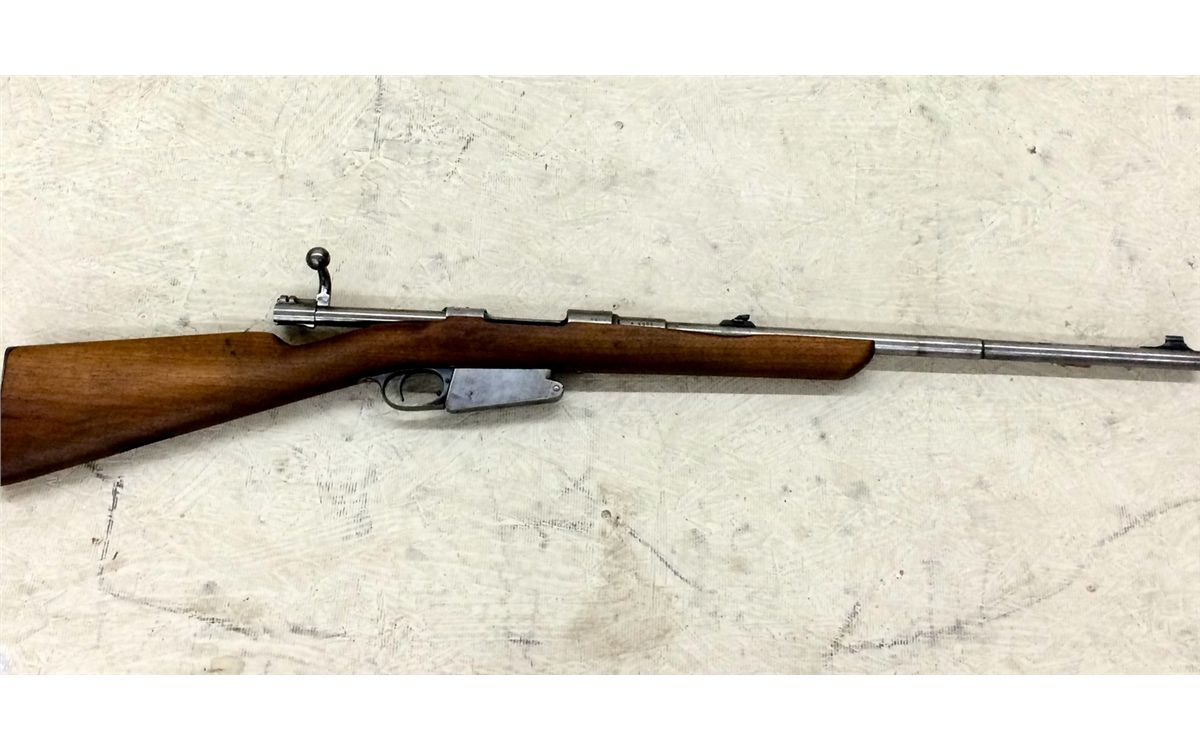

"While the rifles purchased by Argentina did not have any national marks to identify them as such, neither did they have any of the marks associated with the modifications made to virtually all European pieces between 18. so to answer your exact question, there would be zero Argentina usage.Īs far as telling these 5000 rifles from the other hundreds of thousands made, there is this cryptic paragraph from Colin Webster's book, which I quote exactly: So if you find a Commission Model 1888 in Argentina, it is likely to have arrived being carried in by German immigrants moving to Argentina after WWI (over 425,000 were made by Ludwig Loewe alone), and nearly 100% not likely to be the ones actually bought by Argentina.īy the way you called this rifle a Commission 1889, which there is no such thing - I assume you meant 1888.Īlso by the way you asked for info on usage - well they bought some, but never used them, and then civilians brought in perhaps some civilian ones, but they would also never have been "used" by Argentina officially / militarily in any way. Then when the M1891's arrived the entire lot of 5000 was sold to Peru (or Ecuador) at auction on January 19, 1892. These rifles were never issued in an effort to prevent mix-ups with ammunition. The rifles were manufactured by Ludwig Loewe & Cie for 81.50 Francs each. Knowing it would still be some time before their Mauser 1891 models were delivered they needed a few rifles "right away" and so ordered 5000 Commission 1888 rifles ("Gewehr Model 1888") in the German caliber Mauser 8mm (7.92mm), a different caliber from the 7.65 they would soon be acquiring. Overall, very informative article on Argentine small arms.So in January 1892 Argentina was facing possible war with Chile. The 7.65 cartridge remained the standard Argentine military round until the adoption of the FAL in 7.62x51MM NATO in the early 1960s." As Argentina was close to war with both Chile and Brazil over border questions, they agreed. Argentine authorities were told that if they adopted the same round, their rifles could be delivered faster. Both the Belgian Model 1889 and Turkish Model 1890, also then in production, were chambered fo rthe 7.65mm cartridge. "Many collectors have wondered how the Argentine Army came to adopt the 7.65x54mm cartridge when most of the rest of South America had standardized on the 7mm. Little background on that round being adopted is in next paragraph: So yes, Model 1891, produced in Germany under contract for Argentina, in the 7.65 x54mm cartridge. They are also marked with the Argentine national crest atop the receiver." Both the rifle and the carbine were manufactured from 1891 to 1896 in Germany and are marked 'Manufacture Lowe Berlin' on the left side of the receiver. Both the rifle and carbine proved so popular that they were also adopted by Bolivia, Chile, Ecuador, Paraguay, Peru and Uruguay with only minor changes aside from 7mm Mauser rather than the 7.65mm Argentine round. The carbine was not equipped with a bayonet stud. The carbine version was identical to the rifle except for a shorter barrel (17.6 inches) and a mannlicher0type stock that extended to the muzzle, making it an exceedingly handsome weapon. A retaining stud screw was also added to the Argentine Mausers to prevent the removal of the magazine, and a guide rib was added to each side of the bolt sleeve behind the bolt for smoother operation. As had the Turkes, the Argentine military discarded the steel tube protecting the barrel in favor of a wooden handguard.

Turkey quickly adopted the new rifle in 1890, and Argentina followed its example the next year with an order for 180,000 rifles and 30,000 carbines.

The model was an instant hit on the international market. Among its other innovations were a one-piece bolt and a charger clip for quick loading of cartridges into the magazine. This new, small-caliber magazine rifle was distinguished by a steel jacket surrounding the barrel (rather thana top handguard) and a detachable sheet0metal box magazine that projected below the receiver in front of the triggerguard. "The Argentine Model 1891 was a development of the Blgium-pattern Mauser, model of 1889.


 0 kommentar(er)
0 kommentar(er)
